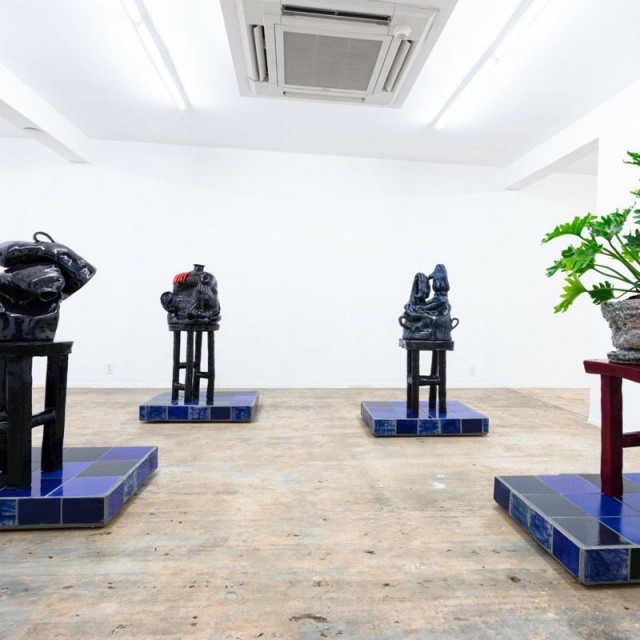Artsy

Without Art Basel, Miami Will Still Have Its Art Market Moment
November 27, 2020
Under ordinary circumstances, this time of year would bring a mass migration of art lovers from all corners of the globe to South Florida for Art Basel in Miami Beach (ABMB) and the accompanying Miami Art Week festivities. Remarkably, despite the cancellation of a physical version of the marquee fair and record-breaking spikes in COVID-19 cases throughout the United States, the region will once again be an art destination in the coming weeks.
While ABMB may only be online this year, a wellspring of on-the-ground programs, pop-ups, and exhibitions has come together to close the gap. Inaugurating this adaptive version of South Florida's art week is Design Miami, which will be taking place on November 27th through December 6th at its original location in the historic Moore Building in Miami's Design District.
''Art Basel is inarguably the central draw over the fair week in December," said Claire Breukel, curator for Design District real estate developer Dacra (which produces Design Miami) and the Craig Robins Collection. "This year presents an unprecedented and necessary opportunity for the Miami Design District to expand its art offerings over a longer period of time."
Curated by Aric Chen, Design Miami will feature nearly 140 works by 57 historic and contemporary artists and designers from around the world. The district will also be unveiling a new For Freedoms billboard featuring work by Adler Guerrier, a project by Cristina Lei Rodriguez, a video installation by Antonia Wright, and a neon text work by Rirkrit Tiravanija that, according to Breukel, “offers much-needed optimism with the words ‘The Sun Is Gone But We Have The Light.’” In addition to the retooled edition of Design Miami, seven galleries (including local stalwart David Castillo and New York’s Ramiken), as well as the local Institute of Contemporary Art and De La Cruz Collection, will organize a series of events and exhibitions around the Design District starting November 27th and continuing through the summer.
Elsewhere in the region, a number of pop-up and seasonal gallery spaces have already opened or are about to. “We had seen the trend of a lot of art fair weeks being canceled and we realized that we had to shift our business model a little bit,” said Jessica Kreps, a partner at Lehmann Maupin. The New York–headquartered gallery is opening a pop-up space in Palm Beach, just a few blocks away from Paula Cooper Gallery’s upcoming Florida outpost.
The Lehmann Maupin space—which the gallery is currently leasing until February—will open with a suite of new works by Hernan Bas, McArthur Binion, Liza Lou, Marilyn Minter, Angel Otero, and Erwin Wurm, all made since the start of the pandemic. From there, the gallery plans on hosting rotating exhibitions featuring works by Teresita Fernández, Shirazeh Houshiary, Lee Bul, Catherine Opie, Helen Pashgian, Alex Prager, and others, as well as significant historical works by John Baldessari and Tracey Emin.
Paula Cooper, meanwhile, plans to occupy its new South Florida home until May with an inaugural exhibition of drawings and sculptures by Claes Oldenburg and Coosje van Bruggen that focus on pleasure. Lévy Gorvy, Jeffrey Deitch, and Mitchell-Innes & Nash are also taking up temporary residence in Palm Beach and Miami’s Design District.
Spearheading this mad dash south was Sotheby’s, Pace, and Acquavella. As the constant unpredictability of this year has kept everyone’s ears diligently to the ground, by the end of this summer, it became abundantly clear that a majority of gallery and auction house clientele would be flocking to Florida long-term to escape the long Northeastern winter and forecasted COVID-19 surge. With the migration of the art-buying client base, major galleries and auction houses soon followed suit.
“As COVID happened, the world shifted pretty quickly,” explained David Schrader, global head of private sales at Sotheby’s. “We immediately started thinking about how to get our works out into the world and spoke to a number of other galleries, including Pace and Acquavella, about opening spaces collaboratively down there. The idea was to have four or five galleries in close proximity where people could spend a few hours or a whole day.”
With leases extending well beyond the lifespan of the typical art fair booth, this prolonged gallery and auction house presence means additional support for the region’s already thriving cultural community. “Just to hear the reaction from our clients has solidified our belief that this was the right thing to do at this moment,” said Kreps. “If Art Basel Miami happens next year and this pop-up proves to be successful, we might just make it part of our business model moving forward.”She added, “There’s already such a great cultural presence in South Florida; I think the galleries moving down there for these pop-ups is only going to enhance what’s already there. We’re viewing this holistically; it’s not just about collectors but also about curatorial opportunities.”
For dealers and lifelong Miamians like Nina Johnson, the more the merrier—so long as the programming is done with real intention and long-term regard for the South Florida community. “I was born and raised here, so I have a very different relationship to this place than most of the art world that comes and goes from here,” she explained. “The question is how we make sure our audiences and local institutions are sustaining the kinds of projects we want to see here year-round.” She added, “We don’t need other people to justify us.”
Johnson’s namesake gallery space recently opened three exhibitions ahead of Miami Art Week: a new series of paintings by Rochelle Feinstein, a homecoming solo exhibition of works by Woody De Othello, and works by Nathlie Provosty produced when she was diagnosed with COVID-19.
“The coming year is going to be a lot about processing and thinking about how we got ourselves to this point,” said Johnson. “I think we all need to be looking at work to help us ask those questions.”